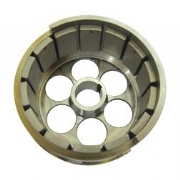 Add My Company
Add My Company
Sign In
Samarium Solution for China Crisis
09-05-2011

Although not particularly rare, 95% of the worlds “Rare Earth” elements (Lanthanides) are mined in China, who’s current stocks are about a quarter of the planets Rare Earth resources. Other untapped or now closed resource mines can be found in Australia, South Africa, USA and Greenland.
These include Neodymium, Praseodymium, and Dysprosium, used in the manufacture of Sintered Neodymium Iron Boron (NdFeB) magnets, and particularly high operating temperature (120 – 200 deg C) NdFeB magnets used typically in drives, motors and actuators.
Last year, due to environmental pressures and to fulfil its own internal demands for high tech products and Green energies (all of which use Rare Earth magnets), the Chinese government closed un-registered mining operations, and issued export quotas on Rare Earth elements.
The price of NdFeB raw materials quickly increased (more than doubled in cost in last 6 months), mounting pressure on the magnet factories in terms of capacity due to advance ordering and the ability to even get hold of particularly Dysprosium , delivery times also increased as a result.
These extremely challenging manufacture conditions have encouraged design engineers to take a second look at Samarium Cobalt magnets, also rare earths, but not in such demand as traditionally they were more costly than NdFeB materials mainly due to fluctuating Cobalt prices, their difficulty in conversion to sintered magnets via powder metallurgy routes, machining their brittle finished state to dimensional tolerance and the high magnetic fields (4.5 Tesla +) required to saturate (magnetise) the magnets. However once finished, their magnetic properties at temperature in terms of low losses compared to NdFeB materials and their ability to work in the harshest of environment without corrosion far out perform high temperature NdFeB EH and UH grades, that work at circa 20% MGO losses at operating temperature. The magnets energy product (MGO), due to the temperature coefficient of Remanence (Br) losses, from a starting point of 38 MGO, at temperature will soon be operating around Samarium Cobalt 32 MGO as the losses in Samarium at temperature are negligible.
With basic cost of Sm2Co17 grade Samarium Cobalt magnets less than EH, UH grade NdFeB magnets and with delivery time for new projects typically 2 / 3 weeks for Sm2Co17 compared to 2 / 3 months for NdFeB, Sintered Samarium Cobalt magnets should be well worth re-considering as a stable material in more ways than one.
For more information on Samarium Solution for China Crisis talk to Magnet Sales and Service Ltd
Enquire Now
List your company on FindTheNeedle.
